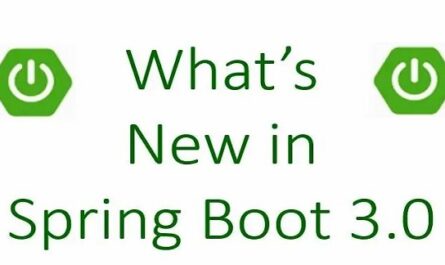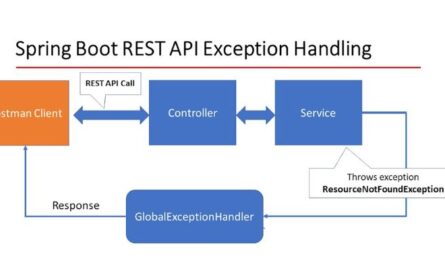Method-level security in Spring Boot refers to the ability to secure individual methods within your application by restricting access based on the roles or permissions of the authenticated user. This type of security is particularly useful when you want to fine-tune access controls and define security constraints at a more granular level than just securing URLs or web endpoints.
Spring Security, which integrates seamlessly with Spring Boot, provides annotations that can be used to declare these method-level security rules. Here are some of the key annotations used for method-level security in Spring Security:
- @PreAuthorize: This annotation is used before entering a method to check if the authenticated user has the necessary permissions to execute the method. For example, @PreAuthorize(“hasRole(‘ROLE_ADMIN’)”) ensures that the method can only be accessed by users with the ‘ADMIN’ role.
- @PostAuthorize: Unlike @PreAuthorize, this annotation allows the method to execute but restricts the method’s result based on the condition provided. It’s useful for fine-grained control over what data can be returned to the user.
- @Secured: This is similar to @PreAuthorize but less flexible as it only checks for roles and cannot evaluate SpEL (Spring Expression Language) expressions. For instance, @Secured(“ROLE_USER”) restricts method access to users with the ‘USER’ role.
- @RolesAllowed: This Java EE annotation is also supported by Spring Security and serves a similar purpose to @Secured, specifying the roles allowed to access a method.
To enable method-level security in a Spring Boot application, you need to add the @EnableGlobalMethodSecurity annotation on a configuration class, specifying which type of annotations you plan to use (prePostEnabled, securedEnabled, or jsr250Enabled for @PreAuthorize/@PostAuthorize, @Secured, and @RolesAllowed respectively).
For example:
@Configuration
@EnableMethodSecurity (securedEnabled = true, jsr250Enabled = true, prePostEnabled = true)
@RequiredArgsConstructor
public class WebSecurityConfig {
}
This setup allows you to use the specified annotations in your Spring Boot application to protect your methods based on the authenticated user’s roles or permissions, providing a powerful way to ensure that sensitive operations are performed only by authorized users.
Which is the preferred layer to enforce method-level security?
The decision on where to place method-level security annotations in a Spring Boot application, whether in the service layer or the controller layer, depends on several factors including the application’s architecture, security requirements, and how granular the security controls need to be. Both approaches have their merits and considerations:
Service Layer Security
Advantages:
- Business Logic Protection: Placing security at the service layer protects your business logic directly, ensuring that unauthorized access is blocked regardless of which controller or external interface tries to access it. This is particularly important for applications that expose the same business logic through multiple types of interfaces (e.g., REST, SOAP, scheduled tasks).
- Reusability: Services are often reused across different parts of an application. By securing the service layer, you ensure consistent security enforcement across all usage points without duplicating security configurations.
- Fine-grained Control: It allows for more granular control over security, as you can secure individual operations based on business rules.
Considerations: - Performance: Security checks at the service layer might introduce a slight overhead, especially if methods are called in a nested manner within the same request context.
- Complexity: For very large applications with extensive business logic, managing security annotations might become complex if not well organized.
Controller Layer Security
Advantages:
- Immediate Feedback to Users: Placing security annotations at the controller layer allows for immediate feedback on authorization failures to the user, which can be handled and communicated cleanly through HTTP responses.
- Simplicity: For applications with straightforward security requirements that align closely with the API endpoints, securing at the controller layer might be simpler and more intuitive.
- Endpoint-specific Security: It’s easier to apply endpoint-specific security rules, such as limiting access based on HTTP methods or request paths.
Considerations: - Potential for Security Gaps: If your application logic is accessible through multiple controllers or interfaces, there’s a risk of missing security annotations in some access points, leading to potential security gaps.
- Duplication of Security Rules: If the same service method is used across multiple controllers, you might end up duplicating security rules, which can lead to inconsistencies.
The service layer is generally considered the best place to enforce method-level security for most applications, especially when aiming to protect business logic directly and ensure consistent security enforcement across different parts of the application. It abstracts security away from the web layer and closer to the business operations, providing a more robust and flexible security model.
Best Practice
However, there are scenarios where controller-level security might be preferable or necessary, especially for simple applications or when security requirements are closely tied to specific web endpoints. In some cases, a hybrid approach might be used, applying security at both layers for different aspects of the application’s functionality.
Ultimately, the choice should be guided by your application’s specific requirements, architecture, and the principles of least privilege and defense in depth.
Happy learning …


